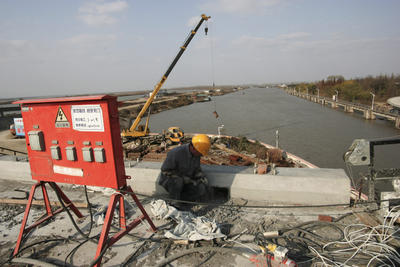The manifestly inadequate response to the problems of some EU economies means that the prospect of a severe new financial shock is real, the future of the Euro is far from assured and confidence is fading, with many predicting up to a decade of weak growth or worse.
The self-imposed crises in the US and the EU have destroyed the capacity of industrial economies to contribute to global growth in the short term. China’s options are also problematic, with policy makers in Beijing increasingly worried about inflation China is will find it difficult to respond with an immediate, massive domestic stimulus, as it did in the 2008 paroxysm of the ongoing financial crisis.
Most economies need to undertake significant structural adjustment if there is to be rising productivity and sustainable long-term fiscal and external balance. But far too many governments have committed themselves, prematurely, to fiscal austerity at a time of deficient global demand, damaging prospects for sustained recovery in developed economies.
In the short-term, there will be enormous tensions as the relative economic weight of emerging economies grows apace. This is a defining moment for the G20, one that will either demonstrate or destroy its capacity to be an effective steering committee for the global economy.
The perverse reality is that, even at a time of deficient global demand, the savings of emerging economies, most of which are generated in Asia, are being intermediated chiefly in the financial markets of New York and London. These savings are then invested largely outside Asia with a significant part lent to governments of already heavily-indebted developed (usually western) economies to finance their fiscal deficits. This money can be put to better use.
The potential for profitable investment in economic infrastructure is enormous. The OECD has estimated global infrastructure requirements to 2030 to be in the order of US$50 trillion. Much of this demand is in Asia, also the primary source of these savings. China may be facing a temporary problem of over-heating, but its stock of capital relative to population and income is low. India and Indonesia offer vast scope for investment infrastructure. The US also needs to make large investments to rehabilitate or extend its economic infrastructure. More generally, global investment is a historically-low share of global output.
A concerted effort by all members of the G20 to make better use of global savings will allow them to work constructively to solve a shared policy problem, rather than blaming each other for too little growth and too many exports.
A G20 effort to deal with this policy issue can become a significant ongoing part of its international macroeconomic agenda: even a partial solution can begin to realise the potential for a sustainable and significant boost to global demand and production.
China and India are already investing more of their savings in infrastructure than in financing developing country debt. ASEAN governments have created an ASEAN Infrastructure Fund. From a modest base, the Fund can be leveraged to make a major contribution to removing domestic bottlenecks and accelerating integration towards an ASEAN Economic Community.
Many more opportunities await financing. Deeper and more liquid capital markets in emerging economies would certainly help. The International Bank for Reconstruction and Development (now known as the World Bank) was able to boost large-scale infrastructure investment after World War II at a time when international financial markets were far less well developed than they are now, suggesting that developing economies are in a good position to expand their infrastructure investment steeply.
The World Bank and regional development banks can all step up their roles. They can be sound borrowers of emerging economies’ savings; they can invest them in productive projects, including projects to improve connectivity among Asia’s economies. Commercial banks can also do more in credit-worthy emerging economies. The solvent economies of the world could create significant additional vehicles for infrastructure finance.
There will be some risks. One or two governments may act irresponsibly and make a mess of some investments. But most investments in infrastructure will prove to be viable. There is a lot of international experience on designing public–private partnerships and shaping policies to set prices and to contain project risks within acceptable limits. And the risk of some projects being less successful than expected is far less than the risks of prolonged recession.
The G20 can move quickly in this direction. Boosting infrastructure in low income countries is already one of the top priorities of its development agenda. G20 leaders have appointed a High-Level Panel on Infrastructure to advise on improving the institutional and enabling environment for investment in infrastructure, and innovative ideas for financing infrastructure projects with significant but delayed returns to investors.
The Panel’s present brief is to focus on badly needed infrastructure in some of the world’s most difficult investment environments, especially sub-Saharan Africa. That focus is too narrow. The issues of institutional capacity and innovative financing and risk management need attention everywhere. The Panel’s terms of reference need to be widened and G20 leaders need to challenge their officials, financial sector managers, and international financial institutions to use their expertise to find ways to intermediate more savings to finance commercially-viable investment in infrastructure where it’s needed.
With a bold development and global infrastructure investment agenda, the 2011 meeting of G20 leaders could restore confidence in recovery. This will require going beyond merely containing financial shocks emanating from Europe to leading the way on long-term investment-led global recovery.
Andrew Elek is a Research Associate at the Crawford School of Economics & Government, The Australian National University.

